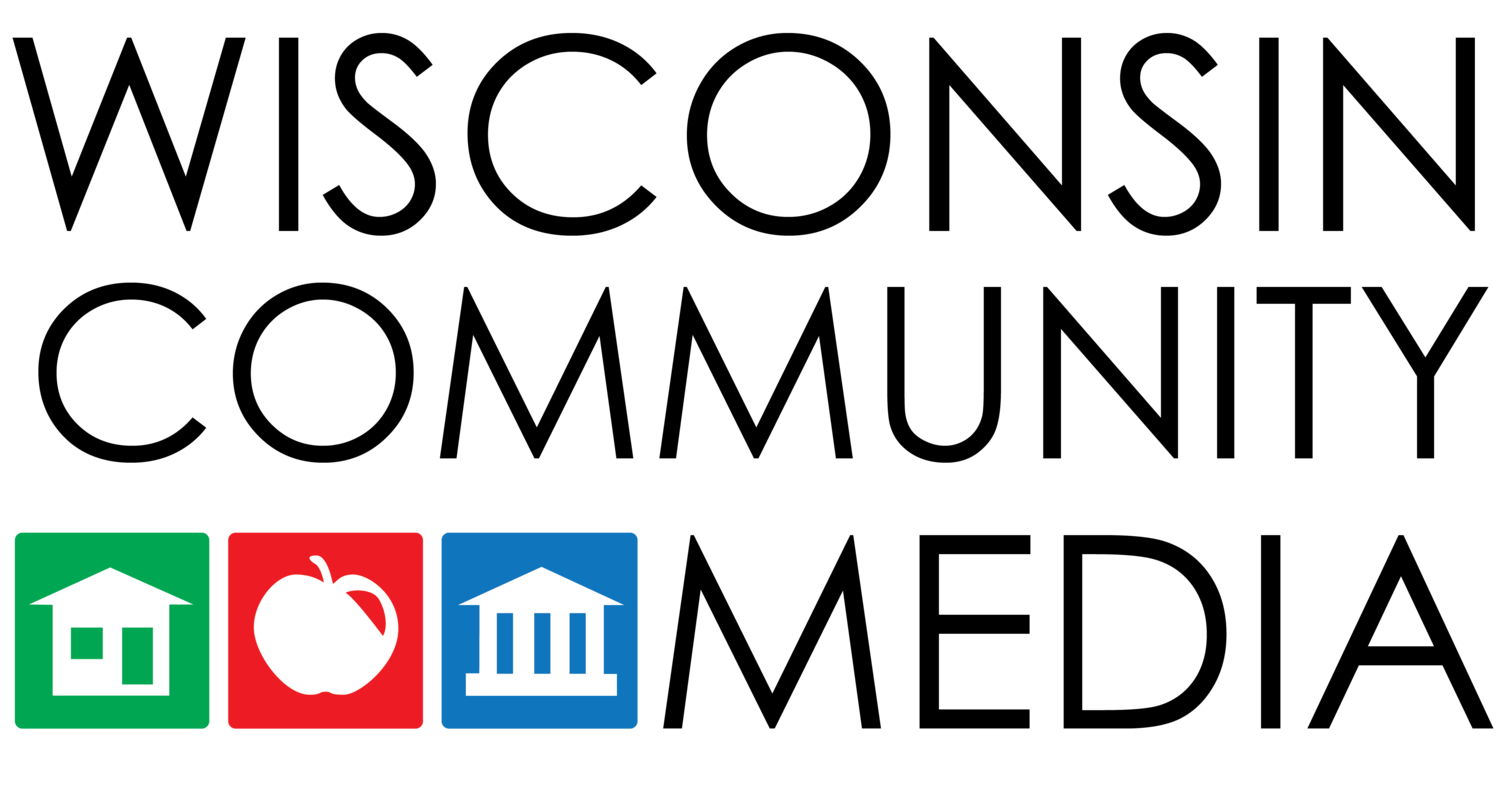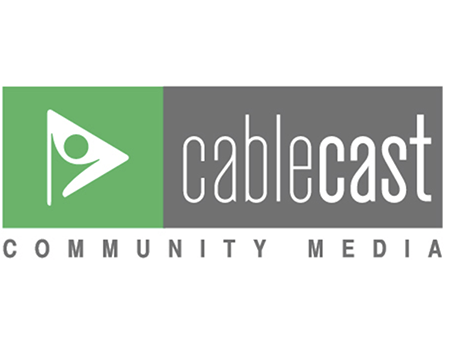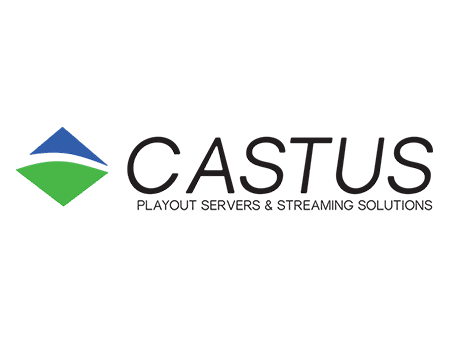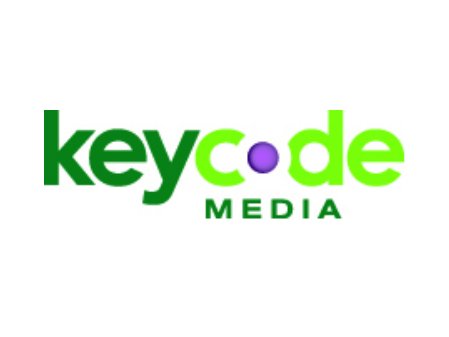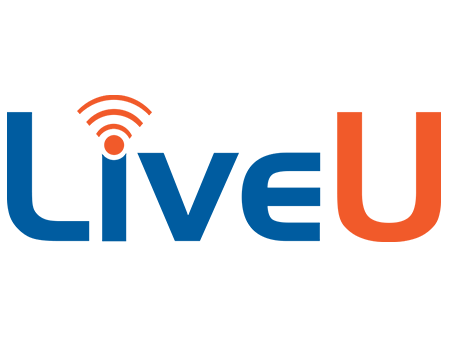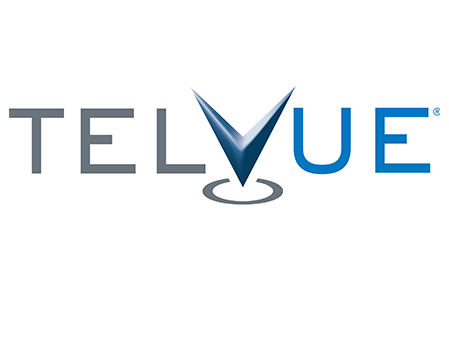Monitoring the action from a portable control room at the curling championships.
Wausau Area Access Media (WAAM) is one of the oldest PEG (public, education, and government) access television centers in the state. But for a nearly two-year period it barely existed. Then a decision by the City of Wausau eleven years ago breathed new life into it. The community wanted its local coverage back. Ever since, WAAM has been providing the kind of programming its residents want to see. Despite a smaller budget, it is producing more community coverage today than it ever did before. It will soon be celebrating its thirtieth year. What happened?
It all began in 1993, when the city signed a 15-year franchise agreement with Charter Communications that included a typical 5% franchise fee, a “PEG fee” of 63 cents per subscriber per month, and two PEG access channels. The PEG station itself was established in 1995 with revenue from the PEG fee. With the city chipping in 10% of the franchise fee, WAAC operated a robust media center over the next twelve years on an annual budget of between $100,000 and $120,000 per year. Its two PEG channels were filled with public access shows produced by residents and local non-profits, high school sports, church services, candidate forums, meetings and more. At its height, more than 150 programs were produced annually, over thirty community organizations were submitting programs, and between ten and twenty people were taking television production workshops every year.
Video Competition Act causes the media center to close
It all came to a shocking end in December 2009 when the Mayor of Wausau, Jim Tipple, announced that the city was closing the center. In short, this happened because of the Video Competition Act enacted by the state legislature in December 2007. This law, similar to those being passed in other states at the time due to pressure from AT&T, moved cable TV regulation to the state level, but allowed local governments to require cable companies to honor certain provisions negotiated in local franchise agreements: the number of PEG channels, the franchise fee (and the negotiated rate), and a continuation of PEG fees that supported media centers – except that the law ended PEG fees after three years. This provision ultimately caused the closure of several media centers across the state and forced the downsizing of many others. But in Wausau’s case, Charter Communications refused to pay Wausau’s PEG fee for even three years. The company claimed that since the local cable franchise term ended on April 14, 2008, it did not have to honor the terms of the Video Competition Act that extended the PEG fees. Wausau spent an agonizing year and a half pursuing its legal options to force Charter Communications to pay the PEG fee – about $65,000 annually — but failed.
So, while other Wisconsin cities continued to receive PEG fees through early 2011, Wausau’s payments stopped right away in early 2008. The city was able to continue operating the center for another year and a half, but by the end of 2009, a serious citywide budget shortfall scuttled the idea of allocating more of its franchise fees to the station in 2010 to keep it afloat. At the time Mayor Tipple said, “We realize this is a tough decision, not only for the City of Wausau, but for the entire community.” John Jordan, the coordinator of the media center, called it a “major loss for the community,” and said, “The city does not want the channels to go dark, but it can no longer fund them alone.” Jordan’s position was officially eliminated on January 31, 2010. The Wausau Area Access Channels (WAAC, now WAAM) office was now closed. A message board continued to operate. Church services brought in by residents were scheduled by David Dickinson and Kris Berge (today the coordinator of WAAM), who worked a few hours each week. City council was still carried live and repeated. All other activity was stilled.
WAAM rises from the ashes
Then on August 13, 2012, the Wausau City Council voted to support the station again. While the allocation of $47,000 was less than half of what the station once had to work with, it was a promising start.
Dickinson and Berge have been working hard over the last ten years to build up the capacity of the media center. Lately, Dickinson has been transitioning into retirement and working fewer hours. Between them, they put in between 20 and 30 hours per week along with five part-timers who help with productions. “During a normal week, everyone’s hours typically add up to less than 40 hours,” said Berge. Today, WAAM is a part of the Community Development Department and the city chips in $57,000 a year to cover station administration and all city-related production work. The remainder of WAAM’s $71,000 budget is earned. WAAM charges $30 per person per hour to cover all non-city productions. The budget includes a regular allocation for capital investment that rolls over if it’s not used.
Berge minimizes the amount of time spent on administration, scheduling, and post-production work so the hours can be poured into production. The schedule is packed.
Efficient meeting coverage that meets ADA requirements
WAAM covers about thirty meetings every month including ten for the Marathon County Board and twenty for the City of Wausau as well as a couple of regular meetings for the Wausau School District.
Both the city and the county have upgraded the technology in their primary meeting rooms by installing four HD PTZ (remote control) cameras and a Tricaster switcher that is portable, but normally stays near the meeting room. The set up enables one person to create quality multi-camera coverage and since both the city and county use the same set-up, staff can work either site equally well. WAAM covers school district meetings held at the Longfellow Administration Center with single camera coverage that is streamed live and replayed later. Viewers can see nearly all meetings live on cable and since 2018, on YouTube. Replays are typically scheduled twice each week until the next meeting of the committee is held. Viewers can also review meetings on the city’s website where a page features video-on-demand (VOD) videos produced by the station. https://www.wausauwi.gov/your-government/public-access-media/video-on-demand.
Two years ago, the City of Wausau purchased closed captioning equipment. “The city sees government transparency as very important, and our insurance provider recommended that we invest in closed captioning in order to conform to the Americans with Disabilities Act (ADA),” said Berge. The ADA requires that city governments “communicate effectively” with people who have disabilities, but at the same time, city governments “are not required to take any actions that will result in a fundamental alteration or in undue financial and administrative burdens.” (28 CFR ss. 35.160-35.164)
The City of Wausau decided that the best option was to invest in captioning equipment that would automatically caption programming live, as well as caption recordings. To the extent possible, all city meetings are now captioned live, while meetings held outside city hall for the county and school district are sent through the captioning system after they are recorded. “It’s not possible due to Internet and routing issues to do live captioning from the remote sites at this time,” said Berge. The live YouTube streams are live captioned by YouTube. And while the Enco Encaption 4 equipment can only caption one meeting at a time, it’s not a problem according to Berge, who loves the system. “We can do as many files as we want to offline so we could offer captioning on all of our programming.” The system aligns well with WAAM’s continual effort to minimize the expenditure of staff time by interacting seamlessly with its Cablecast broadcast server. “All we have to do is check a box and the program is sent through the captioner and back to the Cablecast server.”
The hardware cost $55,000 for a ten-year lease and the yearly maintenance fee is $5,000. Charter Spectrum is passing through the captioning on both channels after some problems doing so on one channel last year. TDS, the city’s other cable provider, also carries the captioned programming. Federal law requires cable companies to pass through any closed captioning on programs.
Residents and reporters like WAAM’s trusted government coverage
Like all local PEG cable channel holders, Berge has no idea what the viewership level is for WAAM’s local channels, but he is able to count VOD views. Meetings have been streamed live on YouTube since 2018. When something is more controversial, views of meetings spike. “We were getting thousands of views for meetings about facemasks at school,” said Berge. Given the highly partisan political environment today, Berge sees WAAM playing an important role in helping to bring people together over gavel-to-gavel meeting coverage. He said, “It is important to show the whole story and not just one side or the other so that people have a known, trusted reference. When they watch a news story, they can always double check what actually happened at the meetings.”
Because it’s so easy to view WAAM’s coverage of meetings, Berge thinks the local press writes more stories about them than it might otherwise. “It seems to me many of the local reporters rely on our coverage. If it’s something important and the livestream doesn’t work, I get emails that say something like, ‘I need this by noon. Could you post the footage?’” The local press also posts excerpts from WAAM’s meeting coverage. “I’ve noticed our footage or stills in their reporting. Sometimes they leave the WAAM bug in and sometimes they crop it out. It’s always fun to see them use it, but we’d like it if they would credit us. It would help promote our channels and help people realize the value of what we do here. We have talked to reporters about it, but there is a lot of turnover and it’s hard to make all reporters aware of our wishes.”
Wausau churches heavily use WAAM to reach their congregations
Reporters aren’t the only group that are reliant on WAAM programming. So are those who depend on WAAM to attend church. “If I miss a service, I get voice mails from church goers. My favorite one was the call I got from a woman when I was at the office. She said, ‘The service is not matching the bulletin for this week. I think it’s last week’s service.’ I told her, ‘I haven’t gotten the new one from that church yet.’ She said, ‘I am a nurse at a nursing home, and I have 18 people here that are pretty mad that they can’t see the new service.’
Twelve churches have regular slots on the channel, one on Sunday and three during the week, including Diocese of La Crosse Catholic Church, Book of Acts Church, Grace United Church of Christ, Immanuel Baptist Church, Peace United Church of Christ, St. Mark’s Lutheran Church, St. Paul’s United Church of Christ, St. Peter’s Lutheran Church, St. Stephen Lutheran Church, Trinity Lutheran Church, St. Andrew Lutheran Church, and Immanuel Lutheran Church. WAAM also produces some special religious programs for churches. “We multi-cam record and edit three services for Zion Lutheran Church (Christmas Eve, Christmas Day and Easter Morning) and cover the Zion Organ Concert Series featuring organists from around the world.”
A reliable place to find polka
There are also the polka lovers. Over the last ten or twenty years, it’s become harder and harder to find venues that host polka dances or even radio stations that play polka. WAAM carries two shows produced by amateur community producers in Wisconsin that are fan favorites: Lights, Camera, Polka and Jim Asplin’s Polka Potpourri. Berge said, “I definitely get calls if the polka shows don’t run!” Cable television is the platform of choice for many older adults. Berge said, “Some of the ‘older generation’ have a hard time managing the Internet. They feel better watching shows on the TV. It’s a service we are happy to provide.”
WAAM covers premiere sports events
While the top priority for WAAM is meeting coverage, it also relishes covering high-profile sporting events. Berge said for him, it’s the most fun of all. “I like doing live productions and troubleshooting to make it all come together. The biggest event we normally cover all year is the Marathon Cup Hockey Tournament in December,” said Berge. High school teams play four games over two days for the championship trophy. Capturing the action involves a production crew of four, a remote switcher, and three cameras. WAAM also covers the State High School Curling Championship that happens in February -- seven two-hour games on a Friday and Saturday. The WAAM team also traveled twice this year to Stevens Point to cover a MMA (mixed martial arts) tourney.
But the biggest thrill of the year was being hired by the US Curling Association to cover the four-day US Curling Club Nationals that were played at the Wausau Curling Center in mid-March. “The best of the best came to Wausau to compete,” said Berge. “It was the first time we did something that big. We had live viewers from all over the country -- and Japan! We covered thirteen games and streamed them live on YouTube. The association also allowed us to replay the games on cable TV.”
WAAM invites the public to submit shows
While the budget no longer allows for training residents in video production, the public can submit programs for play on the community channel and there is a studio space at city hall if people want to use it. “No one is in the office during the workday,” said Berge. “DVDs from residents are dropped off at the front desk. If someone does want to come in, they need to make an appointment.”
WAAM manager works for UW-Stevens Point at Wausau
Berge is the Theater Manager/Technical Director for UW-Stevens Point at Wausau so he can only dedicate evenings and weekends to WAAM. “I went to school for mechanical design and drafting and stayed in the dorms at the UW in Wausau. I started helping on theater productions and just never left.” One day in 2003, John Jordan asked if he and David Dickinson could build a new set for the public access studio; it was for a weekly Hmong News show. “I designed a studio set in the scene shop and that’s how I got introduced to public access. I started working some hours there, got hired, and I stayed on.”
Because Berge covers many events held at the university theater, those of interest to a wider audience find their way onto WAAM’s channels including HANK Talks and A Walk in Their Shoes lectures. WAAM also livestreams the Northcentral Technical College Graduation each fall and spring. This year it also covered a local PFAS (long-lasting environmental contaminants) conference, a Central Wisconsin Regional Candidate Forum, and classical music concerts by the Wausau Symphony.
Lots of streaming platforms and a large suburban audience for WAAM’s cable channels
WAAM uses several platforms to reach audiences. It’s now on two cable systems. TDS began offering service to the City of Wausau last year and the exciting thing is that unlike Charter Spectrum TDS doesn’t downgrade the quality of the city’s programming to the old standard definition (SD) format; TDS plays the PEG channels in HD (high definition). On TDS you can find the public access channel on channel 14 (HD) or 1014 (SD); on Charter Spectrum, it’s on 980 (SD). Wausau’s government channel is on TDS channel 15 (HD) or 1015 (SD) and on Charter Spectrum channel 981 (SD). Because of the way Charter Spectrum’s system works, communities around Wausau can also see the channels including Abbotsford, Antigo, Athens, Clintonville, Marshfield, Medford, Merrill, New London, Rhinelander, Shawano, Stevens Point, Waupaca, Wisconsin Rapids, and Woodruff. WAAM also has a presence on Facebook as WAAMedia. On YouTube, find WAAM here. The city’s website also has a homepage for WAAM.
New technologies enables WAAM to serve the community on a smaller budget
Times have changed. Technology is enabling WAAM to do more hours of programming than it was able to do in its early years, even though its budget is significantly smaller. While access to training and the use of volunteers has been lost, the “pay as you go” model that enables the community to tap WAAM to cover the events that are important to them is making this station work. It’s not ideal, and Berge is the first to say it. “There are events all the time and I think, ‘Oh! We should cover that.’ But I don’t have the time or the staff to do it.”
In 2010 when the station closed its doors, most people probably thought community coverage was done. That was not to be. WAAC served the community so well that when it closed, the community missed it. The organization that rose from the ashes, WAAM, is filling the need for local coverage again, and while it does not have the capacity to do it all, the impact WAAC once had on this community, and the impact WAAM is now having on this community, is a record to be proud of.
